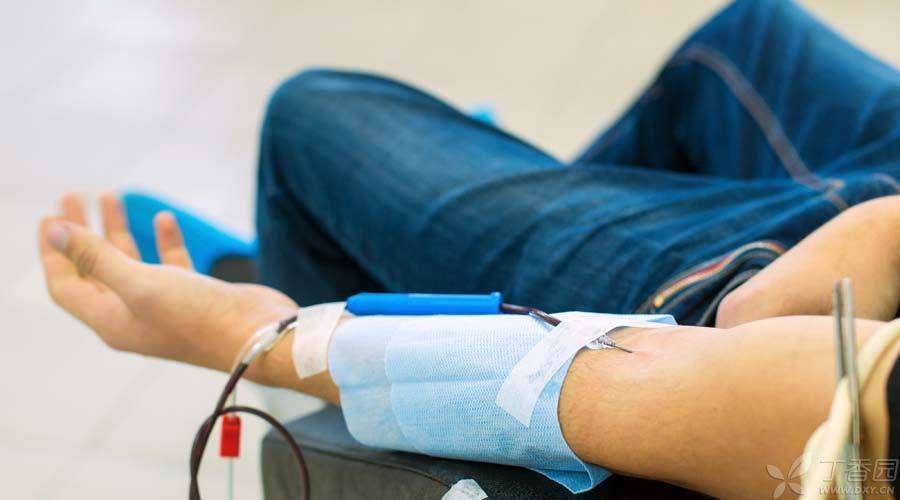
Due to the interests of too many people involved, blood donation without compensation has always been a sensitive topic. Every once in a while, I can always see the conscience of [old doctors] in my circle of friends or microblog, publicizing that blood donation is harmful to my health, or some [insiders] denounce blood stations for huge profits.
I don’t want to repeat the online refutation of these rumors here. Today, I just want to tell you some other [truth] about blood donation calmly.
Is blood donation good for health?
In theory, blood donation may be beneficial to health, because blood loss can promote blood regeneration and reduce blood viscosity. However, in reality, there is not enough convincing research literature to support this statement.
At present, there are generally three specifications of 200 mL, 300 mL and 400 mL for unpaid blood donation in our country, and the interval between two blood donations is not less than six months.
Most people only donate 200 milliliters at a time, which is less than 5% of the blood in their bodies. However, a normal healthy woman has more menstruation (about 200-300 milliliters) in six months than this. Healthy people can easily compensate for it, and even may not necessarily mobilize the blood in liver and spleen.
According to the research of Zhuang Wen et al. In < < observation of hematological indexes of blood donors after 400 ml blood donation > >, in the self-comparison after 400 ml blood donation, there was no statistical difference in other indexes except the increase of total protein.
Therefore, it is hard to say that the descendants of blood donation are healthier-of course, they cannot be said to be healthier.
What is certain at present is that disease screening before blood donation is still useful, which is very helpful for people to understand the infection situation of some infectious diseases.
Is there any adverse reaction after blood donation?
Adverse reactions do exist, but the cause of adverse reactions is not directly related to the donated blood itself.
According to the article “Analysis and Comparison of Blood Donation Volume, Blood Donation Times and Blood Donation Reactions” by Zhang Aiqin et al., the adverse reactions after blood donation include needle sickness, fatigue, mental stress, etc., of which mental stress accounts for the vast majority (95.5%). The reason is often that the first blood donation is too tense and too scared and anxious.
In addition, there have also been cases where some people take blood donation as a physical examination, come over with an empty stomach, and then become hungry and dizzy after donating blood.
Can blood donation infect diseases?
The probability of blood donation infection is very, very small.
The blood collection needles, blood bags and other equipment used by the blood center are all disposable equipment, and are products that have passed the quality inspection by the national drug testing department. After use, they will be recovered uniformly and destroyed centrally, and cannot be reused.
The national health administrative department has formulated strict operating procedures and a system to prevent cross infection for blood collection, and has carried out strict inspection and supervision.
Blood collection personnel in blood stations have received strict professional training. In the process, the staff are required to strictly follow the operation procedures and specifications, and to strictly disinfect the blood collection environment and blood collection parts of blood donors.
Therefore, in blood centers, blood donation offices in hospitals or regular blood donation points, blood donation on mobile blood collection vehicles is rarely infected with diseases.
Can blood be used free of charge after blood donation?
In a certain period of time, it is true that blood can be used free of charge, and besides the blood donor himself, the immediate family members of the blood donor also have very preferential measures.
However, the procedure for reimbursement of blood expenses is quite complicated, which has been criticized by people.
Take the blood reimbursement procedure for a city I found online as an example. The required materials include:
(1) < < Voluntary Blood Donation Card > > (original);
(2) I < < resident identity card > > (original and photocopy);
(3) Official blood invoices of medical institutions (original and photocopy);
(4) One-day list of blood use (official seal of the hospital shall be affixed) or hospital blood transfusion certificate (including blood type, blood variety, blood volume, blood date and name of blood user) (original);
(5) If there is medical insurance or NCMS reimbursement, the reimbursement proportion basis (original and photocopy) shall be provided.
If it is reimbursement for immediate relatives, it is necessary to prove the relationship of immediate family members (common account book, marriage certificate, newborn birth certificate or public security organ certificate) (original and photocopy).
The procedure for blood donors to reimburse their own expenses is as follows:

In other words, a citizen who has donated blood needs to take at least 5 originals and 4 copies and run to 3 places before he can enjoy his own rights.
The greatest benefit of blood donation
In the past few years since I became a doctor, my blood donation has reached 800 milliliters. I am always very gratified to think that this blood may have become a lifeline for some families.
This is the greatest benefit that blood donation brings to me.
This article is exclusively authorized by the author to be used by Clove Garden and refuses any other form of reprinting.
